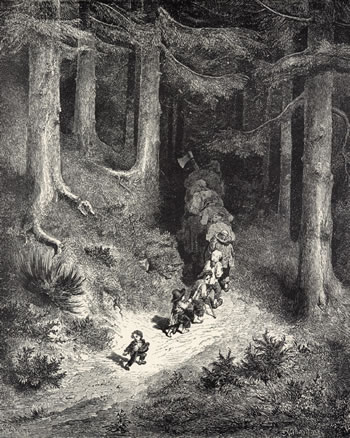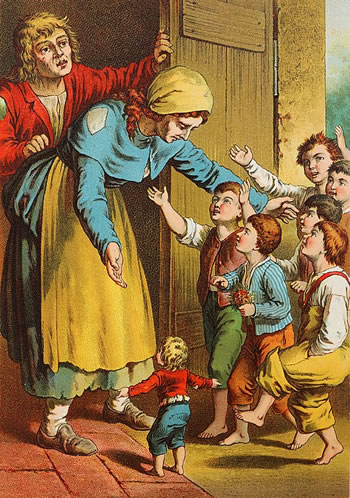A New Play for the General
P.T. Barnum’s famous protegee Charles Stratton, known to the world as Gen. Tom Thumb, was quite a young child when he was first introduced to European audiences in the mid-1840s. Though he was 5, 6, and 7 over the three-year tour, Barnum billed him as five or six years older to make his diminutive stature seem all the more impressive. What was actually more remarkable, given Stratton’s true age at the time, was his exceptional talent, coupled with an outgoing, ebullient personality that captivated all whom he met. Healthy measures of native talent, charm, fun-seeking, and mischievousness made him well-suited to becoming a popular entertainer, roles he seems to have relished.
If we could swoop back in time to see “the General” on stage, I’m sure we’d find the manner and staging of his performances quite unfamiliar. That said, we’d be witnessing the beginnings of something that IS familiar to us today, the creation of a celebrity. That was Barnum’s genius from the start, engineering not only the performances but the whole “roll-out,” everything before and beyond that would cultivate and excite audiences and ensure widespread buzz. Apropos to “buzz,” Barnum’s letters are as close as we can get to being a fly on the wall in 1845, observing how he managed the tour and, as we discover in one letter, the creation of new stage material for Gen. Tom Thumb, whom he clearly admired.
Stratton performed what we would call a variety act that included singing, comedic recitations, portrayals of famous people and characters in costume, and “academic poses” wearing a white leotard-type of garment to mimic classical statuary. There was also a play based on a traditional folk story published in France in 1697 and in England in 1729, akin to the Hansel and Gretel fairy tale. In France it was called Le Petit Poucet, and in England, Hop-o’-My-Thumb. While touring in France, Stratton and his entourage performed a version of “Petit Poucet” as Barnum called it. (“Pouce” being the French word for “thumb,” Tom Thumb was known as Tom Pouce in France.)

A letter to a Mr. Smith, written in Toulouse, France, on September 19, 1845, is quite interesting for the detail Barnum shares about the play, which apparently was in need of editing and new content. Barnum tells Smith, “We have concluded to have you ‘go ahead’ and revamp Petit Poucet making such additions & alterations as your judgement shall dictate.” Barnum seems to have trusted that Smith knew how to please audiences, for he offers direction but leaves the decisions up to him. Quoting Smith’s proposal he wrote,
You propose to ‘entirely reconstruct the piece with good burlesque dialogue all in verse and jokes for £50—or to do it in simple prose for £25.’ Now my dear fellow, I don’t know which will take the best, the poetry or prose, and therefore leave it entirely to you—we want the best thing that can be turned out, and if it will be better in poetry than prose, we prefer to have the former & pay you £50.
Much the way Barnum described the art of “puffing” to C. D. Stuart in another letter, he advised Smith,
We want something wonderfully “steep”—particularly stunning—something overrunning with jokes & cream that will take in any country and if you stick in several comic duets or trios, the General and his little coachy & footman can sing them. I asked the General what I should request you to add to the piece—he says he wants you to add the old English catch, “Three blind mice”& c. for him, his coachy & footman to sing.
It’s interesting to learn that the young coachman and footman who drove Tom Thumb’s miniature equipage were also ad hoc stage performers. Barnum noted to Smith, “The little coachy & footman can always be depended on to fill any little characters which you may choose to introduce them in.”
Reviewing the problems with the current Le Petit Poucet, Barnum expressed his opinion that,
One great fault of Petit Poucet is as you say—the five acts—2 or 3 are sufficient; another fault is, there is not half enough for the General to do. It is no matter how much you put in for him to do, or say, or sing—he can do anything that any actor can do—he has got a first rate idea of the comic, and he can come the pantomime to any extent, & talk as much as you please. If you choose to introduce his statues do so—though perhaps you can introduce other things which will be better. . . . he can strut the dandy—or meditate as Napoleon, and as many other dodges as you desire.
Barnum was much more enthusiastic about the music to Le Petit Poucet which he noted was “good—very good and perhaps it will be better to preserve it in the new piece—if you think so, I will send it to you.”

Inventing clever ways in which to introduce the General on stage was key to engaging the audience at the outset. Ideally, their anticipation would be followed by surprise and delight as people realized how truly small the boy was. Barnum tells Smith, “You can introduce him in a muff, or small work basket—or beer pot, or as many other things as you please . . . .” Barnum himself had introduced the General on stage, for he relates how he’d done it and suggests an idea, if Smith felt it worthwhile:
I have sometimes for fun put him in my bosom, and buttoned my overcoat, so that he could not be seen—it merely gives me the appearance of a tolerable fat alderman—any other man could do the same, and the man might be conversing with a pretended ventriloquist who would introduce a voice into this man’s stomach—the General’s piping voice answering when & what required.
We learn from another of Barnum’s letters that in August, a Monsieur Roux, in Paris, had written a play for Gen. Tom Thumb titled Le Geant; in all probability it too was based on a folk tale. But for some reason it didn’t sit well with young Charles or his instructor, and he refused to learn the lines, something Barnum mentioned on a couple of occasions. Barnum, who disliked Roux, probably didn’t care to push the issue and commented that Roux had written him in September and “complained bitterly” that his play had not been performed. So it is not so surprising that Barnum informed Smith, “I send you a French piece written for the General, called le Geant—he has never learned it nor never will—but perhaps it may furnish you some hints for the new piece–& perhaps it may not.”
And, perhaps in the letters ahead, we will hear of the success of “the new” Petit Poucet, as well as whether Le Geant was ever performed—if only to get Barnum off the hook for the 500 francs he would owe Roux if Tom Thumb failed to perform the play. Such was the business of theatre!
Adrienne Saint-Pierre
Barnum Museum Curator

